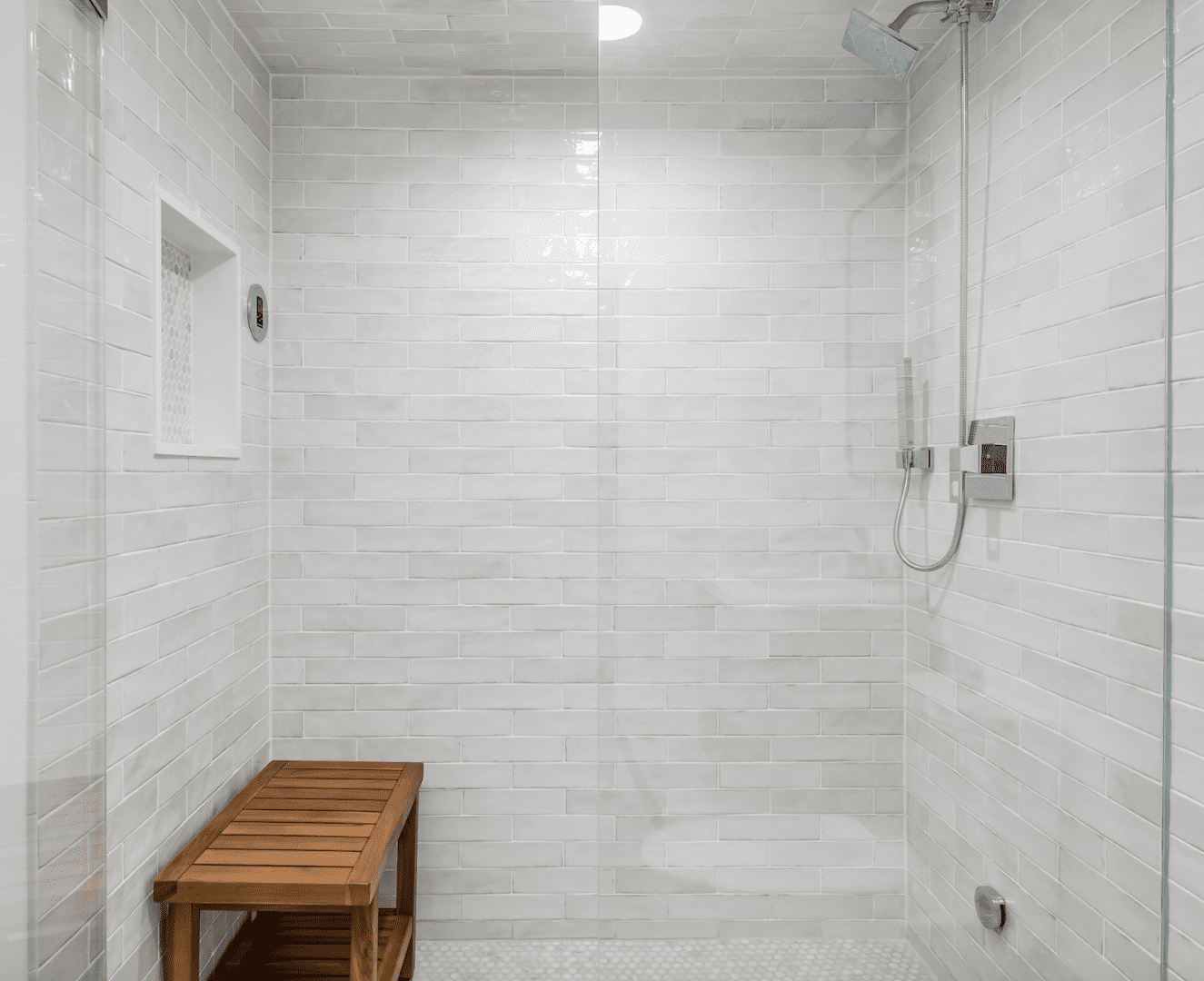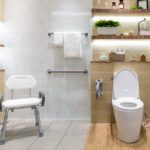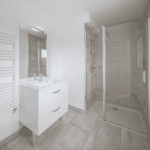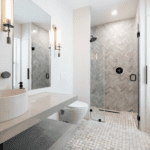Wet Rooms vs. Walk-In Showers: Which Is Best For You?
Struggling to choose between a wet room or a walk-in shower? Discover the key safety differences and safety features, to create an accessible bathing room tailored to your mobility needs.

As we age, the importance of maintaining independence in daily activities becomes more apparent, especially when it comes to personal hygiene. If you’re experiencing limited mobility, ensuring that your bathroom is accessible, comfortable, and safe is crucial. Two popular solutions for accessible bathing are Wet Rooms and Walk-In Showers. While both options offer a luxurious and convenient experience, they cater to different needs, preferences, and space considerations.
In this post, we’ll dive deep into the key differences between wet rooms and walk-in showers, explore the safety features that make both options suitable for individuals with limited mobility, and help you decide which option might be right for you.
Wet Rooms vs. Walk-In Showers: Overview
When designing or renovating a bathroom for someone with limited mobility, it’s essential to choose a solution that offers both functionality and style. Both wet rooms and walk-in showers are increasingly popular options in modern bathrooms, especially for individuals with reduced mobility. However, these two options differ significantly in terms of design, space requirements, and installation processes.
Understanding the variations of each option will help you make an informed decision, ensuring your bathroom meets your needs now and in the future. Let’s take a closer look at what each option entails.
What Is a Wet Room?
A wet room is a fully waterproofed (or “tanked”) bathroom in which the shower area is level with the rest of the room. The entire space is designed to handle moisture, with the water draining directly into the floor. There are no raised shower trays or steps to navigate, making it a seamless and open space for individuals with mobility challenges.
Key Features of a Wet Room:
- Open Plan: No shower enclosure or tray. Water drains into the room’s flooring, giving an open and spacious feel.
- Level Flooring: The entire floor is on the same level, eliminating tripping hazards.
- Waterproofed Surface: The entire room, including walls and floors, is waterproofed, allowing the whole space to function as a shower.
- Minimalist Design: Wet rooms are often sleek, modern, and minimalist, making them an attractive option for accessible bathrooms.
For individuals with limited mobility, wet rooms offer a practical, barrier-free environment that is easy to enter and exit, reducing the need for assistance and supporting independent living.
What Is a Walk-In Shower?
A walk-in shower is a type of shower that is enclosed by glass panels or doors but doesn’t require you to step over a significant threshold, making it more accessible than traditional showers. Unlike a wet room, a walk-in shower still has defined showering boundaries, but it does away with the need for a bulky bathtub or high curb to step over.
Key Features of a Walk-In Shower:
- Low or No Curb Entry: Designed for easy entry with little or no step-over.
- Enclosed Area: Glass panels or doors typically surround the shower to contain water and provide privacy.
- Shower Tray: While it has a shallow tray for water drainage, the shower area remains level with the surrounding floor, making it accessible.
- Customisable Design: Walk-in showers can be customised to fit various bathroom sizes, often making them a good choice for smaller spaces.
For individuals with reduced mobility, walk-in showers provide a safer, more accessible alternative to traditional showers and bathtubs, with the added benefit of privacy and water containment.
Key Differences Between Wet Rooms and Walk-In Showers
Now that we’ve outlined the basics of both options, let’s explore the main differences between wet rooms and walk-in showers:
- Space Utilisation
- Wet Rooms: Suitable for larger spaces, but they can also work in smaller bathrooms with the right design. Since there’s no defined shower area, the entire room must be prepared to handle water.
- Walk-In Showers: More versatile for smaller spaces, as the shower area is contained within a specific zone.
- Water Containment
- Wet Rooms: Water flows freely and drains through the floor, requiring a sloped floor and full waterproofing.
- Walk-In Showers: Enclosed by glass or partitions, water is contained within the shower tray, minimizing the spread of water throughout the room.
- Cost and Installation
- Wet Rooms: Generally more expensive to install due to the need for complete waterproofing (tanking) and flooring adjustments.
- Walk-In Showers: More affordable and less invasive to install, especially in existing bathrooms where waterproofing the entire room isn’t necessary.
- Maintenance
- Wet Rooms: Can be easier to clean as the entire room is designed to get wet, but mold prevention and ventilation are crucial.
- Walk-In Showers: Regular maintenance is required to keep the shower tray, glass, and tiles clean, but water is more contained.
Safety Features of Wet Rooms
1. Non Slip Flooring
Wet Rooms can become slippery when wet, so installing non slip flooring is essential to prevent falls or accidents.
2. Grab Rails and Support Bars
Strategically placed grab bars near the shower area, and toilet offer additional support when moving around. These bars help individuals maintain balance and provide confidence when standing or transitioning from one area of the room to another.
3. Shower Seating
A foldable or built in shower seat allows users to shower comfortably without needing to stand for extended periods. They are especially beneficial to people with balance issues.
4. Level Flooring
One of the defining features of a wet room is the level floor, which eliminates the need to step over any threshold into the shower area.
Safety Features of Walk-In Showers
Walk-in showers are inherently designed with accessibility in mind, but adding specific safety features can further enhance their usability for those with limited mobility:
- Low-Level or No-Threshold Entry
The absence of a high curb means fewer tripping hazards, allowing individuals with walkers or wheelchairs easy access to the shower area.
- Handheld Shower head
A handheld shower head on a sliding rail is a flexible solution, making it easier to shower while seated or standing.
- Slip-Resistant Shower Tray
A textured, slip-resistant shower tray provides more stability and reduces the chance of falling while showering.
- Safety Glass with Grab Bars
For added safety, grab bars can be installed on the walls or even attached to the shower enclosure itself. Safety glass ensures that, in the rare event of a breakage, the glass will shatter into small, blunt pieces to avoid injury.
- Accessible Storage
Keep all toiletries within easy reach by installing recessed shelving or low-level storage units. This prevents unnecessary bending or stretching, which can increase the risk of falls.
Choosing the Right Option for You
When deciding between a wet room and a walk-in shower, it ultimately comes down to your specific needs, preferences, and bathroom space.
Wet Room Pros:
- Ideal for larger bathrooms or those looking for a completely open, barrier-free design.
- Easier to navigate for wheelchair users or those requiring full accessibility.
- Modern, minimalist aesthetic.
Walk-In Shower Pros:
- Perfect for smaller bathrooms with limited space.
- Contains water more efficiently, reducing the need for post-shower cleanup.
- Offers a good balance of accessibility and privacy with its enclosed design.
Both wet rooms and walk-in showers can be equipped with the necessary safety features to make them suitable for people with reduced mobility. If in doubt, consult with a bathroom design specialist or mobility expert who can guide you through the process, ensuring you select the best option for your individual needs.
Ultimately, both wet rooms and walk-in showers provide accessible, stylish, and safe solutions for bathing. The choice between them will depend on your personal preferences, the space available in your home, and your long-term mobility requirements.
Conclusion
Both wet rooms and walk-in showers are fantastic solutions for individuals with limited mobility, providing enhanced accessibility, safety, and a touch of modern luxury. Whether you choose the open-plan design of a wet room or the more enclosed, water-contained space of a walk-in shower, either option can be customised to meet your specific needs, from non-slip flooring to grab rails and seating.
Your choice should reflect your current and future mobility requirements, bathroom size, and budget. When designed with care, either option can make daily bathing easier, safer, and more enjoyable, allowing you to maintain your independence and confidence in your own home.
If you’re considering renovating your bathroom to include a wet room or walk-in shower, we offer a FREE consultation to ensure all safety measures are met and that your new bathroom will cater to your needs for years to come.




